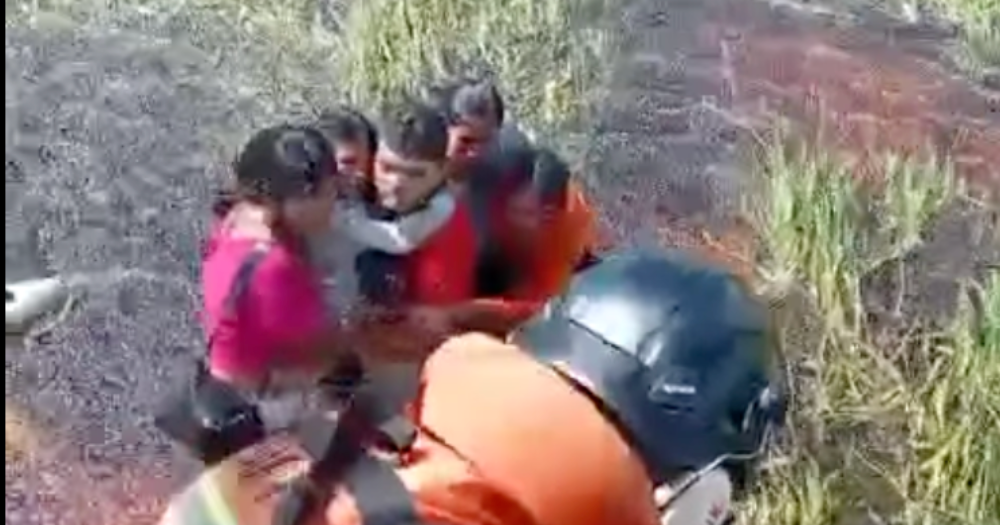Surviving the Swamps: A Harrowing Tale of Resilience After a Plane Crash
In a gripping test of human endurance, six Bolivian passengers survived 36 hours stranded in an alligator-infested swamp after their small plane crashed on June 12, 2024. The group, which included two children, battled dehydration, venomous insects, and the constant threat of predators in the remote wetlands near Trinidad, Bolivia, before rescuers located them. Their ordeal underscores both the fragility of life and the extraordinary power of resilience.
The Crash: A Descent Into Danger
The single-engine Cessna 206, operated by a local charter company, departed from Santa Ana del Yacuma en route to Trinidad when engine failure sent it plummeting into the sprawling Mamoré River wetlands. Witnesses reported hearing sputtering noises before the aircraft disappeared into the dense foliage. “It was like the sky swallowed them,” said a local fisherman, one of the first to alert authorities.
Survivors recounted the terrifying moments post-impact. “One second we were airborne; the next, we were submerged in waist-deep water with the plane sinking fast,” said 34-year-old Mariana Rojas, a teacher and one of the survivors. The group escaped with minor injuries but quickly realized their surroundings posed even greater risks.
36 Hours in the Killing Fields
Bolivia’s tropical lowlands are home to black caimans, venomous snakes, and piranhas—a fact the survivors knew all too well. With no clean water or food, they clung to debris from the wreckage, forming a makeshift raft to avoid the murky depths. “Every ripple in the water felt like a death sentence,” Rojas admitted.
- Predator Encounters: At least three caimans circled the group, their eyes barely visible above the waterline.
- Environmental Threats: Temperatures soared to 95°F (35°C), and swarms of mosquitoes left the survivors covered in bites.
- Psychological Toll: The children, ages 7 and 9, were kept calm with songs and stories to prevent panic.
Dr. Carlos Mendez, a survival expert, noted, “The human body can endure extreme conditions, but the mind often breaks first. Their ability to stay coherent as a group was likely their saving grace.”
The Rescue: A Race Against Time
Search teams faced daunting challenges. The Mamoré wetlands span over 8,000 square miles, with dense vegetation hampering visibility. Using the plane’s last known coordinates and local guides familiar with the terrain, rescuers finally spotted the survivors at dawn on June 14. “We heard faint whistles—like birds, but too rhythmic. That’s when we knew,” said Lt. Javier Ortega of the Bolivian Air Force.
The survivors were airlifted to Trinidad’s Hospital San Juan de Dios, where they received treatment for dehydration, infections, and minor injuries. Remarkably, none required long-term hospitalization.
Lessons in Survival: What Kept Them Alive?
Experts highlight key factors that contributed to their survival:
- Group Cohesion: The survivors prioritized teamwork, assigning roles (e.g., lookout, morale booster) to maintain order.
- Resourcefulness: They used plane debris for flotation and fashioned rudimentary tools to ward off wildlife.
- Local Knowledge: One passenger, a farmer, identified non-toxic plants for moisture, preventing fatal dehydration.
However, the incident has reignited debates about aviation safety in Bolivia’s remote regions. The country has one of Latin America’s highest rates of small-plane accidents, with 42 crashes reported between 2010 and 2023, according to the Aviation Safety Network.
Broader Implications: Safety Reforms and Human Resilience
Bolivia’s Civil Aviation Authority has pledged to review maintenance protocols for regional aircraft, particularly those servicing hard-to-reach areas. Meanwhile, psychologists emphasize the need for post-trauma support. “Survivors often face lingering anxiety, especially children,” said Dr. Elena Cabrera, a trauma specialist. “Their recovery isn’t just physical—it’s emotional.”
The Mamoré survivors, now hailed as local heroes, hope their story inspires better preparedness. “We were lucky,” Rojas said. “But luck isn’t a plan.”
For readers interested in wilderness survival techniques, consider certified training programs from organizations like the Red Cross or Outward Bound. Preparedness saves lives.
See more CNN Headline


